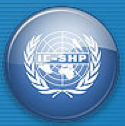The International Center on Small Hydro Power (ICSHP) reports on Bhutan, Mexico and Peru describe hydropower capacity, electrification levels and national laws and policies on renewable energy.
Each report also identifies opportunities and challenges for growth, including rural electrification.
All three countries aims to develop its renewable energy capacity and Bhutan has committed to 100% electrification by 2013.
 30 July 2012: The International Center on Small Hydro Power (ICSHP) has released SHP Development Reports for Bhutan, Mexico and Peru. The reports describe hydropower capacity, electrification levels and national laws and policies on renewable energy. Each report also identifies opportunities and challenges for growth, including rural electrification.
30 July 2012: The International Center on Small Hydro Power (ICSHP) has released SHP Development Reports for Bhutan, Mexico and Peru. The reports describe hydropower capacity, electrification levels and national laws and policies on renewable energy. Each report also identifies opportunities and challenges for growth, including rural electrification.
The report on Mexico notes its installed hydropower capacity is currently 11.4 Gigawatts (GW), of which 390 Megawatts (MW) is SHP. Its hydroelectric potential is 53,000 MW, of which 3,250 MW would come from SHP. Nearly 96% of the population has electricity coverage, but only 87% of the rural population has electricity. Poor infrastructure, rugged terrain and inability to pay represent barriers to rural electrification. Consequently, renewable energy, including mini hydro technology, is being explored to electrify isolated communities as well as to reduce greenhouse gas emissions. Additional challenges to hydropower development are access to the grid and simplification and approval of permits and licenses.
The report on Peru notes its installed hydropower capacity is 3,202 MW, 274 MW of which is SHP. Peru’s hydroelectric potential is estimated to be 1600MW but its SHP potential is not known. Although Peru’s national electrification rate is nearly 78%, Peru has one of the lowest rural electrification rates in Latin American, with only 40% of the rural population having access. Financial viability and equipment represent the main challenges to hydropower development in Peru. Peru previously generated 85% of its electricity from hydropower, but this has been reduced to 68% due to cheap natural gas prices and comparably easier, quicker construction of gas facilities. However, the report notes that carbon financing, including through the Clean Development Mechanism (CDM), has the potential to improve the financial viability of hydropower projects in Peru.
The Bhutan report finds only 60% of the country is electrified but that over 99% of its electricity comes from hydropower. Bhutan’s current hydroelectric capacity is 1,488.8 MW, 25 MW of which is SHP. Its hydropower potential is approximately 23,760 MW. Bhutan bases its renewable energy policy on its Gross National Happiness (GNH) development philosophy, which promotes preservation of cultural values, environmental conservation, good governance and sustainable development. Bhutan aims to develop its renewable energy sources and enhance energy security through the creation of a Department of New and Renewable Energy. Bhutan has committed to electrify 100% of Bhutanese households by 2013. Challenges include: funding mobilization; lack of private sector participation; and high construction and transport costs.
The ICSHP is a public and non-profit institution under auspices of United Nations Industrial and Development Organization (UNIDO), China’s Ministry of Water Resources and Ministry of Commerce. ICSHP also serves as the headquarters of International Network on Small Hydro Power (INSHP), an international organisation with more than 400 members from 78 countries. [Publication: Mexico SHP Report] [Publication: Peru SHP Report] [Publication: Bhutan SHP Report]